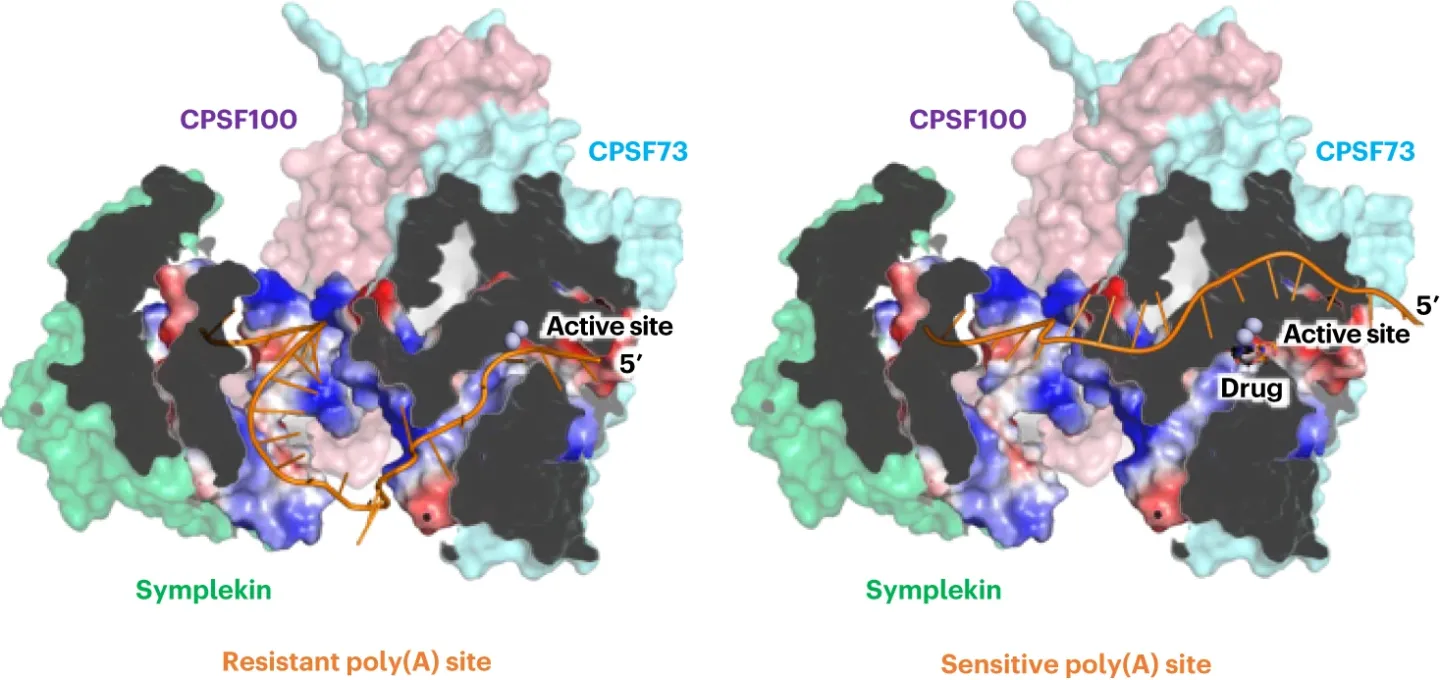Anticancer compound JTE-607 reveals hidden sequence specificity of mRNA 3′ processing
Source: UCI School of Medicine

Researchers from the University of California, Irvine, combined biochemistry and artificial intelligence to reveal the mechanism of action for an anticancer compound.
Over 20 years ago, pharmaceutical company Novartis reported a small anticancer and anti-inflammatory molecule compound called JTE-607 that was highly active against hematopoietic (blood) cancers, including leukemia and Ewing’s sarcoma. The main problem with the JTE-607 compound is that it is much less potent against other cancers because it specifically inhibits the essential endonuclease CPSF73 in the mRNA processing pathway.
However, in a recently released study in Nature Structural & Molecular Biology, researchers from the University of California, Irvine, shared their latest findings that showed JTE-607 actually inhibits CPSF73 in a sequence-specific manner, resulting in only a specific set of genes being inhibited by this compound, which may explain its specificity in killing cancer cells. The study, which also included researchers from the University of Washington and Stanford University, combined experimental and artificial intelligence (AI) approaches to characterize the mechanism of action for this anticancer compound, with results that will guide future efforts in developing better cancer therapy.
"We have identified a number of target genes of this anticancer compound that is potentially uniquely required for leukemia,” said Yongsheng Shi, PhD, professor and Chancellor’s Fellow in the Department of Microbiology & Molecular Genetics at UCI School of Medicine. “In the future, we hope to characterize the functions of these genes in leukemia and test the possibility of treating leukemia by blocking the functions of these genes.”
The study was funded by NIH (R35GM149294 and R21AI166703).
Study Abstract: JTE-607 is an anticancer and anti-inflammatory compound and its active form, compound 2, directly binds to and inhibits CPSF73, the endonuclease for the cleavage step in pre-messenger RNA (pre-mRNA) 3′ processing. Surprisingly, compound 2-mediated inhibition of pre-mRNA cleavage is sequence specific and the drug sensitivity is predominantly determined by sequences flanking the cleavage site (CS). Using massively parallel in vitro assays, researchers identified key sequence features that determine drug sensitivity. They trained a machine learning model that can predict poly(A) site (PAS) relative sensitivity to compound 2 and provide the molecular basis for understanding the impact of JTE-607 on PAS selection and transcription termination genome wide. They propose that CPSF73 and associated factors bind to the CS region in a sequence-dependent manner and the interaction affinity determines compound 2 sensitivity. These results have not only elucidated the mechanism of action of JTE-607, but also unveiled an evolutionarily conserved sequence specificity of the mRNA 3′ processing machinery.
Read the full article, “The anticancer compound JTE-607 reveals hidden sequence specificity of the mRNA 3′ processing machinery,” in the December issue of Nature Structural & Molecular Biology.
